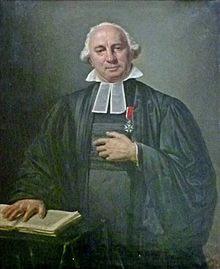
The Huguenots were a religious group of French Protestants who held to the Reformed (Calvinist) tradition of Protestantism. The term, which may be derived from the name of a Swiss political leader, the Genevan burgomaster Besançon Hugues (1491–1532), was in common use by the mid-16th century. Huguenot was frequently used in reference to those of the Reformed Church of France from the time of the Protestant Reformation. By contrast, the Protestant populations of eastern France, in Alsace, Moselle, and Montbéliard, were mainly Lutherans.

The Dragonnades were a French government policy instituted by King Louis XIV in 1681 to intimidate Huguenot (Protestant) families into converting to Catholicism. This involved the billeting of ill-disciplined dragoons in Protestant households with implied permission to abuse the inhabitants and destroy or steal their possessions. The soldiers employed in this role were satirized as "missionary dragoons".

Athanase Laurent Charles Coquerel was a French Protestant theologian, born in Paris, elected deputy of the Constituent Assembly after the revolution of February 1848.

The American Church in Paris was the first American church established outside the United States. It traces its roots back to 1814, and the present church building - located at 65 Quai d'Orsay in the 7th arrondissement of Paris, France - dates to 1931.
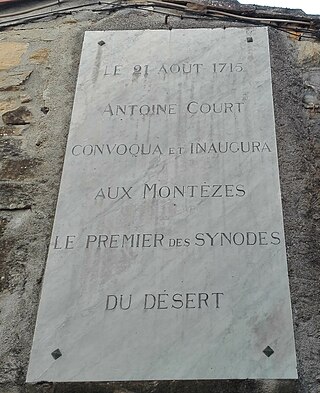
Antoine Court was a French reformer called the "Restorer of Protestantism in France." He was born in Villeneuve-de-Berg, in Languedoc, on 27 March 1696, although at least one source lists a different date. His parents were peasants, adherents of the Reformed church, which was at the time a target of state persecution following the 1685 Edict of Fontainebleau.
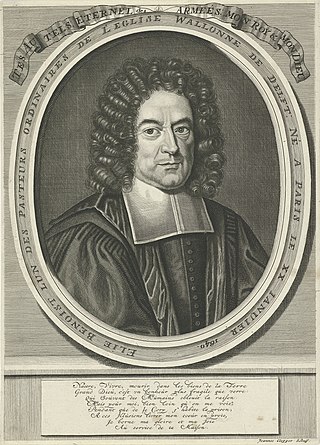
Élie Benoist, was a French Protestant minister, known as a historian of the Edict of Nantes.

Brussels Protestant Church is a Brussels-based Protestant Christian congregation formally constituted in 1804 and whose roots go back to the Protestant Reformation of the 16th century.
The Temple de l'Observatoire was a Protestant Christian church in Brussels, started in 1834 when a group left Brussels Protestant Church and called French Methodist missionary, Philippe Boucher (1811–1885), to serve as their pastor. This was because they preferred "evangelical, saving, pious" preaching to the "rationalistic" and "cool and academic" ministry of pastor Chrétien-Henri Vent.

The Temple du Marais, sometimes known as the Temple Sainte-Marie, or historically, as the Church of Sainte Marie de la Visitation, is a Protestant church located in the 4th arrondissement of Paris, in the district of Le Marais at 17 Rue Saint-Antoine. It was originally built as a Roman Catholic convent by the Order of the Visitation of Holy Mary, whose sisters were commonly called the Visitandines. The church was closed in the French Revolution and later given to a Protestant congregation which continues its ministry to the present. The closest métro station is Bastille

Pentemont Abbey is a set of 18th and 19th-century buildings at the corner of Rue de Grenelle and Rue de Bellechasse in the 7th arrondissement of Paris. The complex had originally been a Cistercian monastery of nuns. The abbey was founded near Beauvais in 1217 and moved to its current site in Paris in 1672 at the behest of King Louis XIV. A reconstruction of the abbey was initiated in 1745 by the Abbess Marie-Catherine Béthisy de Mézières and work was completed in 1783. In the late 18th century, the abbey was one of the most prestigious educational institutions in Paris for daughters of the elite, including two of Thomas Jefferson's. The abbey also provided rooms for ladies of good standing who were in search of rest, including Joséphine de Beauharnais when the case of her separation from her first husband was heard.

Tommy Fallot was a French pastor who is known as the founder of Christian socialism in France.

Saint-Louis-du-Louvre, formerly Saint-Thomas-du-Louvre, was a medieval church in the 1st arrondissement of Paris located just west of the original Louvre Palace. It was founded as Saint-Thomas-du-Louvre in 1187 by Robert of Dreux as a Collegiate church. It had fallen into ruin by 1739 and was rebuilt as Saint-Louis-du-Louvre in 1744. The church was suppressed in 1790 during the French Revolution and turned over the next year for use as the first building dedicated to Protestant worship in the history of Paris, a role in which it continued until its demolition in 1811 to make way for Napoleon's expansion of the Louvre. The Reformed congregation was given l'Oratoire du Louvre as a replacement and saved the choir stalls from Saint-Louis-du-Louvre which are still in place at l'Oratoire.

The Église réformée de l'Oratoire du Louvre, is an historic Protestant church located at 145 rue Saint-Honoré – 160 rue de Rivoli in the 1st arrondissement of Paris, across the street from the Louvre. It was founded as a Roman Catholic church in 1611, became the royal chapel of France and under Louis XIII, and then became a Protestant Church under Napoleon I in 1811. It is now a member of the United Protestant Church of France.

The Musée protestant, created in 2003 by the Fondation pasteur Eugène Bersier, recounts the history of Protestantism in France from the 16th century to the present.

Jacques Antoine Rabaut known as Rabaut-Pommier,, was a politician of the French revolutionary era. He was a member of the National Convention (1792–95) and of the Council of Ancients (1795–1801). In 1816 he was exiled for regicide under the Bourbon Restoration, though he later benefited from an amnesty. Deeply committed to medicine, he was an ardent advocate of vaccination.
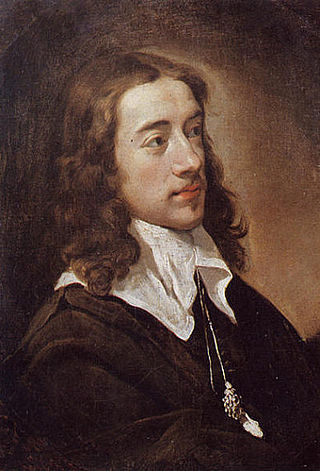
Louis Testelin (1615-1655) was a French painter.

The Saint-Germain Cemetery or Saint-Pierre Cemetery was a rectangular cemetery in Paris, first attested in 1259 and used by Protestants from 1598 to 1604 onwards. It was sited in the north-west corner of the former rue Taranne and rue des Saints-Pères, alongside the chapelle des Saint-Pères (on the site now occupied by square de la Charité at 186 boulevard Saint-Germain. It measured 27 toise by 8 toise. Its site is now covered by Square Taras-Chevtchenko.

Jacques Saurin was a major French religious figure in the late 17th century and early 18th century who was particularly well-known as a preacher. While he began his career as a Catholic priest, Saurin ultimately converted and became a pastor of the Reformed Church of France.
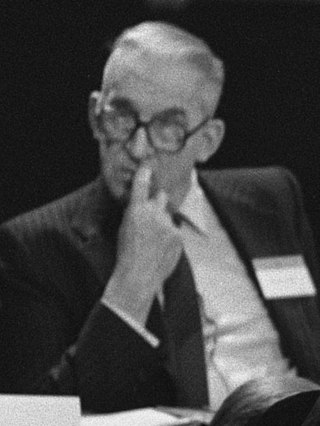
Jacques Maury was a French pastor.
